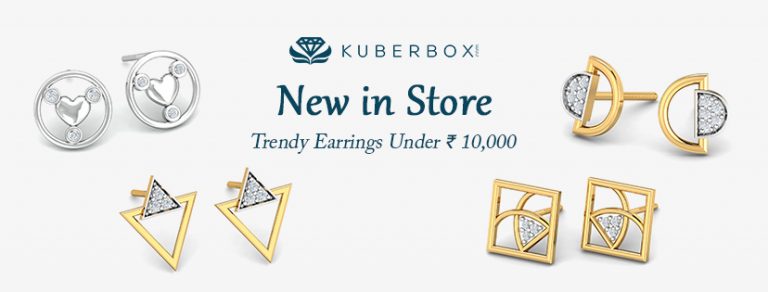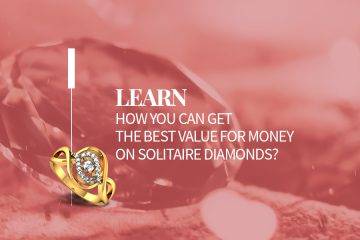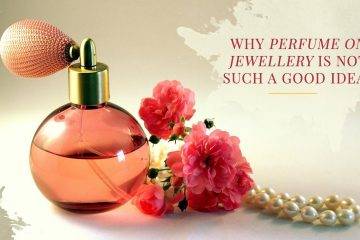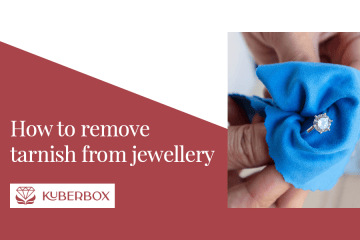Gold Hallmarking – How Not To Get Fooled While Buying Gold Jewellery
The hallmarking of jewellery and fine metals has been a practice from the times when the ancient Egyptians and Romans reigned. This made us wonder if something so advanced like hallmarking was being practiced during that time, then we cannot just disregard the value of the process of Hallmarking.
Hallmarking is the process by which your jewellery is marked with various quality marks and trademarks that speak of its manufactures or retailers. KuberBox jewels are all thoroughly checked and then crosschecked after which they are stamped with the correct quality marks. Since we are so particular about the jewellery we sell to you, we have made sure to translate the same through to our workshops maintaining the standard we require. Back in the day women used to sit with the jewellers when stones like diamonds were being set or perhaps if their gold was being transformed into beautiful pieces of jewellery, which is what we do for you.
In relation to India and our rich heritage that’s intertwined with gold, fine metals and gemstones, gold has proved to have everlasting value. It was also slowly learnt that fine metals like Gold, Platinum and Silver are required to be alloyed in order to be strong enough for the use in jewellery.
For a quick insight into alloys, it is when a mixture of metals, is added into fixed quantities to pure gold. This gives enhanced durability to otherwise soft gold that may be too soft for wearable jewellery. This is the reason why you have probably seen the purest forms as coins or bars and are great for gifting as they give back their full value. Read about the % of alloys, various metals used in alloys and their effect on pure gold in one of our earlier blogs – 22K vs 18K vs 14K.
In today’s day and age with all the advancements in technology in this ever-growing industry, there have been innumerable instances where jewellers have been misleading their customers. As a customer you do not want to buy 22K gold and then when melted be told of its true content as being only 18K. Insisting on hallmarked jewellery is something we at KuberBox strongly promote as it only builds confidence in you, the customer and also makes jewellery so much more saleable.
Misleading customers is one of the primary reasons why the hallmarking of jewellery has become a standard across this industry in India and in other countries. When jewellery is being manufactured there is a lot of “soldering” which takes place. This is essentially like gluing pieces of gold together with pieces of gold. These small pieces of gold that are used to glue are made of alloys with lower purities and can largely contribute to the reduced purity of gold. This is also a common point some manufactures fail to disclose. Another reason why more & more people are opting for hallmarked jewellery is because it prevents the buyers from these fraudulent methods.
As history has it King Edward the 3rd required all precious metals to be marked, stamped and tested to maintain the standards of the precious metals being used during his rule. Hallmarking of jewellery has also been noted to be Europe’s first method in consumer protection and still offers its consumers this benefit to this day.
Hallmarks and Hallmarking:
In India we follow a government recognised hallmarking system call the BIS Hallmarking System. This nationally accepted system is in sync with international standards and gives you, the customer the ability to get value on your jewels internationally.
The BIS hallmarking can only done by assaying centres that have been certified after meeting a list of requirements and receive complete training from the BIS team. They are given the permission to hallmark metals with the BIS quality marks for 3 years and are under strict surveillance during this time as they carry the quality standards of another organization.
The BIS hallmark as depicted has 5 components that you should look out for and they are:
1. BIS (triangular) mark
2. Fineness or purity mark
3. Assaying centre mark
4. Year of marking which is denoted with Alphabets as decided by the BIS (i.e. A for the year 2000 etc.) and the
5. Jewellers identity mark
Here we have listed out for you the BIS stamps and their corresponding values in Karats of Gold.
BIS Hallmarking Standards:
958 Corresponding to 23K
916 Corresponding to 22K
875 Corresponding to 21K
750 Corresponding to 18K
585 Corresponding to 14K
375 Corresponding to 9K
Jewellers can stamp their jewellery with their own quality marks, which is another widely practiced part of the manufacturing process. But with the verification and hallmarks of a third party like the BIS, which is recognised by the government there is increased credibility. The BIS is also very strict about its standards carrying out random checks and if the assayers fail to operate in conformance to their standards the licence to operate is revoked.
Platinum & Silver Hallmarking
Platinum and Silver can also be hallmarked in the same way and is done extensively across countries. Sterling silver as you might already know is when the pure silver content is 92.5%. This is perhaps something you have commonly heard in jewellery stores when buying silver bowls, trays, cutlery etc. When jewellers manufacture their jewellery or artefacts with this purity, they stamp the metal with the “Sterling”, “925” or the “92.5” stamp clearly indicating the metals purity. Now when you’re out buying objects or jewellery in silver for an occasion do look out for the stamps to be sure about your purchases.
Platinum jewellery on the other hand must contain at least 500 parts of platinum in its alloy to fall within the platinum jewellery benchmark. If platinum has 500 parts of fine metal, its stamp must be followed with the content of its alloys. When the platinum content is above 850-900 parts there is no need to mention the composition of the alloys.
In India the following is the stamp for platinum jewellery:
Don’t forget to look out for the platinum stamp when buying jewellery. Whereas, in other parts of the world the following stamps can also be seen: “Plat”, “Platinum” or “pt.”.
Plating is a common process in the manufacture of jewellery and has its own set of quality marks. Gold plating must always be coated with at last 10K gold in order to be considered gold plated. A bit traditional but this is the machine and liquids used to plate jewellery. The liquids vary for Gold, Platinum, or Silver on the bases of purity.
Gold plating must have a minimum of ½ a micron of gold layered on top. This can then be marked “G.P.”, which stands for Gold Plated. If the plating exceeds 2.5 microns it is considered to be heavy gold plating.
How Do You Test The Purity of Gold:
In order to test the purity of the metals there are different tests that can be exercised. These vary from destructive to non-destructive tests, some of which take seconds and others that require time with a lot of equipment.
The Electronic Gold Tester – which is mostly non-destructive, detects the purity on contact. It is not a very accurate test as cannot distinguish the difference between gold or gold plating.
The Touchstone test is a comparatively accurate test in relation the gold tester and is also used to check the karatage of the gold. In this process the gold is tested on its reaction to acids. It is one of the oldest techniques to check the purity of the gold. The jewellery is rubbed against a basalt stone and with the help of needles of the assumed karatage, the reaction to the acids is checked.
As a customer you must be extremely careful when submitting jewellery for this process as it can damage the jewellery piece.
The other and very accurate method is the Fire Assay, which is most likely done at a special facility because of its lengthy process and equipment. It is a destructive test in which the entire jewellery piece will be destroyed. The chosen metal is melted with pure silver and once separated the difference in weights is noted giving a clear indication of the different components.
Now as a well-informed customer like you cannot be fooled by dishonest sellers.
Keep reading the KuberBox Blog for more on jewellery and gemstones.
References & Credits –
http://www.gold.org/jewellery/about-gold-jewellery/gold-hallmarks
http://www.bis.org.in/cert/hallbiscert.htm
http://www.preciousplatinum.com/en-us/about-platinum/design-features/hallmark
http://www.quicktest.co.uk/acatalog/info-agt1-dlx.html
http://www.mgsrefining.com/gold-refining-process/hand-testing/
http://www.agrgoldbuyers.com/fire-assay/
http://www.fingyan.com/government-hallmarking-gold-jewellery-mandatory-in-india/
http://idiva.com/news-style-beauty/the-secret-to-buying-platinum-jewellery/26336















1 Comment
Karab · June 20, 2018 at 4:52 pm
Nice information, peoples will get some idea before buying any gold and diamond products